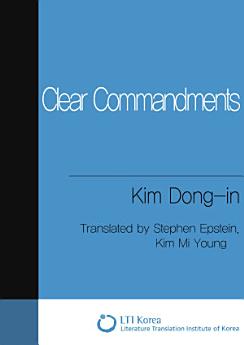Clear Commandments
Nov 2014 · 20th Century Korean Literature Ibhuku elingu-26 · Literature Translation Institute of Korea
3.8star
5 izibuyekezoreport
I-Ebook
11
Amakhasi
reportIzilinganiso nezibuyekezo aziqinisekisiwe Funda Kabanzi
Mayelana nale ebook
In “Clear Commandments” (Myeongmun, 1925), a free play of imagination is on display in a story that in fact introduces God as an important character. The text begins in a realistic mode, as it explores familial strife between a son and his parents as a result of his conversion to Christianity. After death, however, the protagonist finds himself in a heavenly court, where he must justify a life based on self-righteous and self-serving interpretation of doctrine to a harshly critical and mocking Jehovah. In depicting a society in the midst of social ferment and intergenerational conflict, the story in many ways predicts Kim Dong-ni’s renowned “Portrait of a Shaman”, written a decade later, which also treats the collision of worldviews between a shaman mother and her Christian son.
Izilinganiso nezibuyekezo
3.8
5 izibuyekezo
Mayelana nomlobi
Kim Dong-in (1900 – 1951), together with Yi Kwang-su, is one of early modern Korean literature’s representative writers of “pure” fiction. His debut work “The Sorrow of the Weak,” which appeared in the journal Changjo (Creation) in 1919, is considered the first Korean short story to focus in earnest on character development and psychological analysis. A clear, concise style is the hallmark of Kim’s writing. As the first author to adopt the plain past tense “-ieottda” style and to establish an objective stance in fiction with a third person point of view, he is regarded as having employed a realistic technique and well-rounded character types, in contrast to Yi Kwang-su, who saw literature as a vehicle for enlightenment and whose characters were more flatly drawn.
Nikeza le ebook isilinganiso
Sitshele ukuthi ucabangani.
Ulwazi lokufunda
Amasmathifoni namathebulethi
Faka uhlelo lokusebenza lwe-Google Play Amabhuku lwe-Android ne-iPad/iPhone. Livunyelaniswa ngokuzenzakalela ne-akhawunti yakho liphinde likuvumele ukuthi ufunde uxhunywe ku-inthanethi noma ungaxhunyiwe noma ngabe ukuphi.
Amakhompyutha aphathekayo namakhompyutha
Ungalalela ama-audiobook athengwe ku-Google Play usebenzisa isiphequluli sewebhu sekhompuyutha yakho.
Ama-eReaders namanye amadivayisi
Ukuze ufunde kumadivayisi e-e-ink afana ne-Kobo eReaders, uzodinga ukudawuniloda ifayela futhi ulidlulisele kudivayisi yakho. Landela imiyalelo Yesikhungo Sosizo eningiliziwe ukuze udlulise amafayela kuma-eReader asekelwayo.











